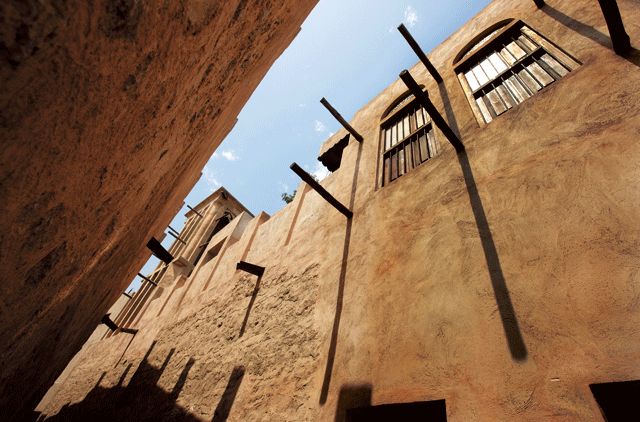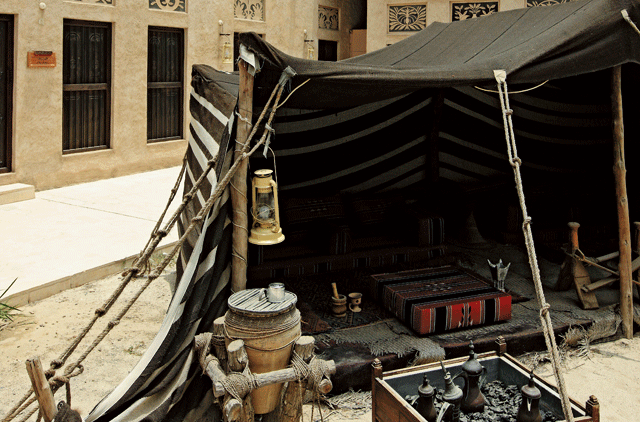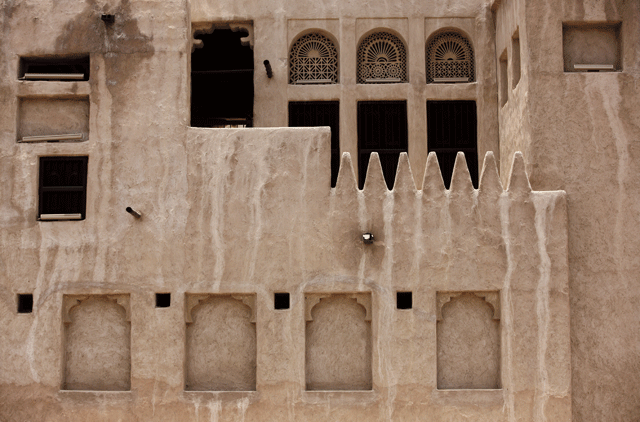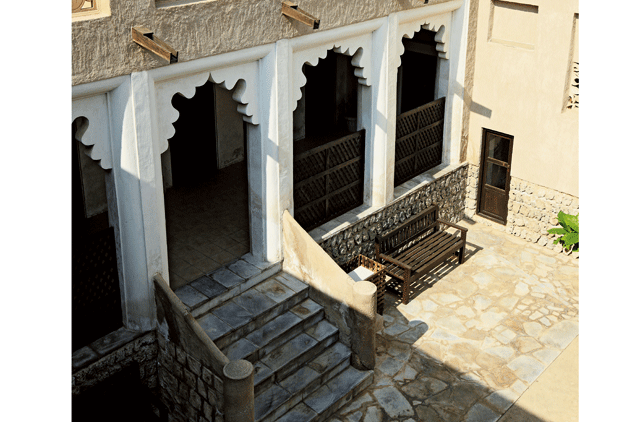
Walking through Al Bastakiya on a hot Thursday afternoon is worth the effort when you've got an appointment with Rashad Bukhash, the director of Architectural Heritage Department, Dubai Municipality - and the man behind the 146 restoration projects in Dubai. I'm told Rashad sits at house number three."I'll take you, he's my boss," insists the watchman. After a short walk, we climb the steps of the old heritage building and he points to the small five-foot traditional door on the left. Rashad's office is a small but cosy space with a window that lets in enough light to offer an old-world charm to this beautiful authentic room.
For someone who was born and lived in Al Bastakiya, it's only natural that he would have a connection with the area. He took up his first job with Dubai Municipality in 1987 and later went on to become the director of the heritage department. One of his first and most favourite restoration projects was the Al Fahidi Fort, the oldest building in Dubai. Well-spoken and articulate, he tells me how and when his love for architecture began."I can't say when my passion for architecture started," he says. "I believe I was born to do it. I lived in this district, we had traditional decorations, the courtyard and I remember sleeping on the roof in the summer. My real passion began in 1974, when I was 13 years old and an architect named Peter Jackson, who is now the adviser to His Highness Dr Shaikh Sultan Bin Mohammad Al Qasimi, came to survey our house, a typical wind tower house in Al Bastakiya. I was the boy who was helping him with the surveying for three weeks, and he showed me how sketches were done." Jackson later went on to publish two books about his house - one in 1974, and the most recent one last year.
During this short period, Rashad fell in love with architecture and decided he would pursue a career in it. He later went on to achieve a Bachelor of Architecture from Syracuse University in the US and a Masters in Philosophy in Architecture from Manchester University. In 2008, he won the Best Architect in the Country award from His Highness Shaikh Khalifa Bin Zayed Al Nahyan, President of the UAE, Supreme Commander of the UAE Armed Forces and Ruler of Abu Dhabi. This year, he received the regional architect award.
"The uniqueness of the traditional architecture in the Gulf especially Dubai, has always been inspiring to me - the colours, patterns and decorative elements of the traditional houses with the court houses and wind towers remind me of my upbringing. I like to paint and I have a genuine interest in art - all of these factors bring a fulfilment to my job," he says.In addition to this, Rashad is currently writing and supervising 33 books on the history and restoration developments in Dubai. "We plan to publish stories for children on architectural conservation. They will be in both English and Arabic.
Each year over Dh5 million is spent on restoring historic buildings in Dubai. The budget is not as big as I had expected but it's enough to keep the Architectural Heritage department occupied. We look through a portfolio of before and after restoration pictures of old buildings in Dubai - there's a lot more involved in the process than I thought. The transformation of Hatta Heritage Village, Al Ahmadiya School, the Shaikh Saeed Al Maktoum House and the Grand Souq, Bur Dubai is clearly far from being a simple job
One of the common difficulties they've faced during the process is the dampness in the buildings due to the humidity. There have been termite infestations, as well as some technical hitches, but Rashad says they have overcome these issues through the years. "We have a listing of 492 buildings, of which 146 have been restored, so we have a long plan to restore all of these. Every year, we have 12 projects that we focus on. We begin our research by sourcing old photographs of the building and we conduct a historic survey where we interview people, neighbours or relatives who lived in the house or nearby." He explains, "We note down everything from their social behaviour to the architectural experience of that time. It's our job to try and find out as much as we can through old documents and manuscripts. It's a careful process which is a vital part of our research." He continues "From the beginning we decide whether the building should be a museum, restaurant, or a hotel. Almost all the restoration is done in-house and we have around 300 people dedicated to this. We start with the foundations, and move on to the upper walls and the ceilings and then the smaller exterior components like the doors and windows. If it's a medium-sized house, it usually takes one year."
As the chairman of the Architecture Society in the UAE, he's doing his part for the history and culture of the country. He says, "Dubai is developing very fast but it's important to keep the old part of the city, it's only one per cent of the total urban area of Dubai, so it's very important to look after that area for the coming generations. We need to have a balance of old and new."














